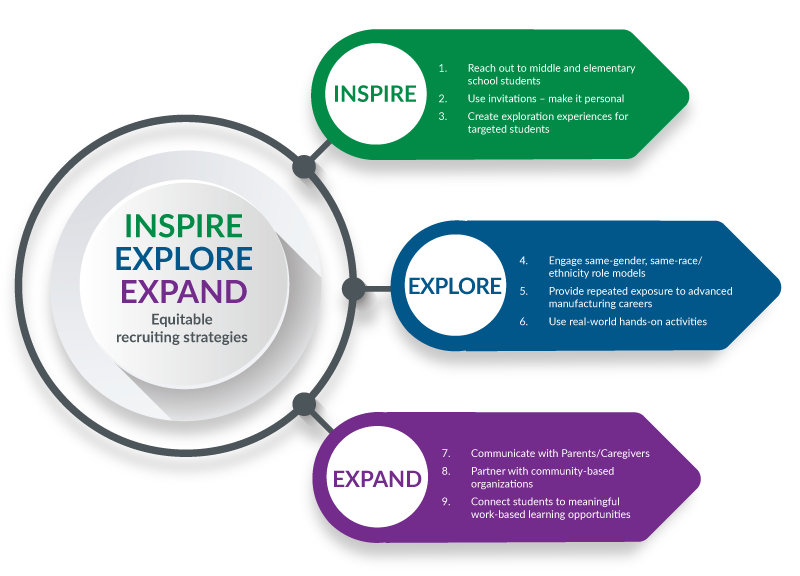Best Practices
Click here to download a printable and complete Best Practices guide.
Poster Downloads
*Note, these PDF files are large and print quality. Depending on your internet connection speed, may take some time to download.
Click here to download a printable and complete Best Practices guide.
*Note, these PDF files are large and print quality. Depending on your internet connection speed, may take some time to download.

Improving Students’ Access to and Awareness of STEM Careers

Culture shapes our biases and beliefs about people based on their age, gender, race, language, (dis)ability, or income level, often without our realization. We communicate our biases in our world, often unknowingly, through micromessages. The accumulation of micromessages over time impacts a person’s belief in his or her own ability to be successful in a course, class, college, and career. Through interactive and reflective activities on the power of culture on our interactions with students, this session will equip educators with specific strategies to support student participation, persistence, engagement and success.
Many groups, especially females, students of color, students with disabilities, English language learners, and students from low socioeconomic backgrounds are significantly underrepresented in high-skill, high-wage jobs in advanced manufacturing. These inequities exist in part due to our stereotypical way of thinking about careers. For example, nurses and elementary school teachers are often portrayed as females, mechanics as males, engineers or leaders in advanced manufacturing fields as white males. These stereotypes create hidden obstacles, but you can help break down barriers that limit females and other historically underrepresented student groups from engaging in educational pathways that can prepare them for careers in advanced manufacturing.
NAPE’s nine research-based strategies can help you confirm equitable practices you are already using, tweak approaches that could easily be transformed to attract more girls, and consider new equitable practices for your recruiting strategy. They will also help you consider how you can tailor your messaging and events to motivate girls to engage, explore and enroll. After each strategy, we point you to relevant links and resources for further reading.

First, we offer three strategies to help you inspire girls to engage. These strategies will help you inspire them to attend your recruiting events and learn more. Once you have their attention, the next step is to keep it. A big part of your job is teaching potential students about the opportunities in advanced manufacturing. We offer three strategies to help you design your recruitment events and use equitable instructional strategies. Finally, enriching the recruiting experience by engaging parents, businesses and community organizations can amplify the impact of your events and messages. We offer three strategies aimed to help you develop the key partnerships with influential people in students’ lives.
This module will help you work towards improving your Perkins Core Indicators, especially as they pertain to participation and completion of students who are nontraditional by gender. If you don’t know much about the Perkins Core Indicators, don’t worry, because we’ll start with some background information. The module will then assist you in identifying root causes that are affecting the success of your CTE classroom, program, department, and/or school, especially programs focused on science, technology, engineering and mathematics (STEM). You will receive a plethora of research-based strategies and resources to address the root causes.